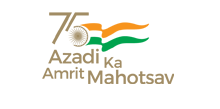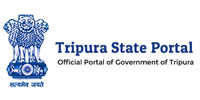Overall Objective :
- Directorate of National Vector Borne Disease Control Programme (NVBDCP) is the central nodal agency for the prevention and control of vector borne diseases i.e. Malaria, Dengue, Lymphatic Filariasis, Kala-azar, Japanese Encephalitis and Chikungunya in India.
Status of the Programme :
- The Programme Malaria is an integral component of NRHM and is implemented under the overall umbrella of NRHM. The programme monitored at the national level through the mechanisms established under NRHM.
- Directorate of NVBDCP is the nodal agency for policy recommendation and issuance of technical guidelines, whereas the State Governments health institutions are the primary implementing agencies.
- Assistance by GOI whether cash or commodity or otherwise based on the approved PIP of the state Governments, commonly known as Record of Proceedings (ROP) of the National Programme Coordination Committee (NPCC).
Strategies :
- Focused interventions in high malaria endemic areas
- Linkage with National Rural Health Mission (NRHM) and use of NRHM institutions for prevention and control of VBDs (especially involvement of VHSCs for IRS).
- Early diagnosis and treatment by
- Strengthening of human resources for surveillance and laboratory support.
- Introduction and scale up of Rapid Diagnostic Kit (RDK).
- Introduction and scale up of Artemisinin- based combination Therapy (ACT) for Pf cases.
- Geographical Information System (GIS) mapping for focused intervention in high risk prioritized districts.
- Up scaling use of bed nets, preferably Long Lasting Insecticidal Nets (LLINs).
- Intensive monitoring & supervision.
- Intensified Information, Education and Communication (IEC) and Behavior Change communication (BCC) activities involving community.
Present Scenario of the Programme :
- Training:- At district level, different training programmes of various technical malaria staff such as Assistant Malaria Officer (AMO), MPW Supervisor, MPW (Male & Female) and also Community Volunteers including ASHA are being conducted from time to time under the supervision of District Health & Family Welfare Society.
- Implementation of NAMMIS in the State :- The Directorate of NVBDCP, GOI, Delhi has engaged M/s TATA Consultancy (TCS) for making functional web-based National Anti Malaria Management Information System (NAMMIS) all over the Country. As per guideline, NAMMIS will be operational at district level very shortly.
- Activities of ASHA:- In eight districts 7367 nos. of trained ASHAs are performing effective role in control of malaria in remote areas. According to their jobs they are also getting necessary incentive as provided by the GOI, to the State.
Impact on Health :
- Monitoring & Supervision: In comparison to 1998-99, monitoring & supervision for the programme has been increased. DMOs, SDMOs & MOICs are also monitoring & supervising the programme implementation. Moreover Medical Officers (AYUSH) have been involved for monitoring & supervision of respective institutions.
- Early Diagnostic & Prompt Treatment (EDPT): In the year 1998-99 there was no scope for EDPT, but recently there is a scope for EDPT using Rapid Diagnostic Kits (RDK), which are already supplied at periphery level among ASHAs, MPWs, MPSs.
- Declaration of Sentinel Surveillance Hospital (SSH): The Directorate of National Vector Borne Disease Control Programme, 22-Sham Nath Marg, Government of India, Delhi has declared the Manu CHC, Dhalai District and Santirbazer PHC, South Tripura district as Sentinel Surveillance Hospital (SSH) in the State of Tripura.
Allotted quantity of LLINs to the districts given below :
| Year | Sanctioned | West | Khowai | Sepahijala | Gomati | Dhalai | Unakoti | North | South | Remarks |
|---|---|---|---|---|---|---|---|---|---|---|
| 2015-16 | 1006380 | 289920 | 42720 | 48080 | 118560 | 141080 | 56360 | 99440 | 209920 | Received from GOI |
| 2018-19 | 180400 | - | - | - | - | 180400 | - | - | - | Received from GOI |
| 2019-20 | 550419 | - | 65000 | - | 108907 | - | - | 165083 | 211429 | Received from GOI |
Epidemiological Report (w.e.f 2012 up-to June, 2022 ) :
| Year | BSE | Positive Cases | Pf Cases | Pf % | SPR | SFR | ABER | API | Malaria Deaths |
|---|---|---|---|---|---|---|---|---|---|
| 2012 | 268189 | 11565 | 10915 | 94.4% | 4.3% | 4.11% | 7.1% | 3.1 | 7 |
| 2013 | 257760 | 7396 | 6998 | 94.6% | 2.9% | 2.7% | 6.8% | 1.9 | 7 |
| 2014 | 606791 | 51240 | 49653 | 96.9% | 8.4% | 8.2% | 15.7% | 13.3 | 96 |
| 2015 | 453298 | 32525 | 30074 | 92.5% | 7.2% | 6.6% | 11.7% | 8.4% | 21 |
| 2016 | 351392 | 10546 | 9545 | 90.5% | 3.00% | 2.7% | 8.9% | 2.7% | 14 |
| 2017 | 371678 | 7049 | 6578 | 93.31% | 0.43% | 0.39% | 10.07% | 1.77% | 06 |
| 2018 | 471831 | 13079 | 12600 | 96.33% | 0.80% | 0.75% | 0.22% | 3.24% | 13 |
| 2019 | 601043 | 12437 | 11636 | 93.56% | 0.39% | 0.36% | 15.61% | 3.13% | 01 |
| 2020 | 394503 | 3395 | 3100 | 91.31% | 0.14% | 0.12% | 10.61% | 0.86% | 02 |
| 2021 | 484838 | 10136 | 9028 | 89.07% | 0.24% | 0.21% | 15.49% | 2.58% | 04 |
| June, 2022 | 75980 | 3881 | 2846 | 73.33% | 0.54% | 0.41% | - | - | - |
- DDT stock position as on 30/06/2022 is 19 bags (each bag contains 25 kg)
- DDT coverage for the year 2021-22:- 1st Round- 70.17%
- DDT coverage for the year 2021-22:- 2nd Round- 72.06%










